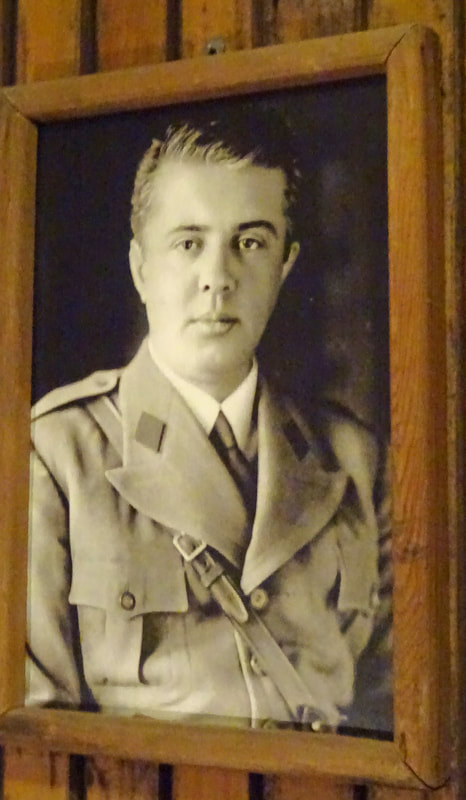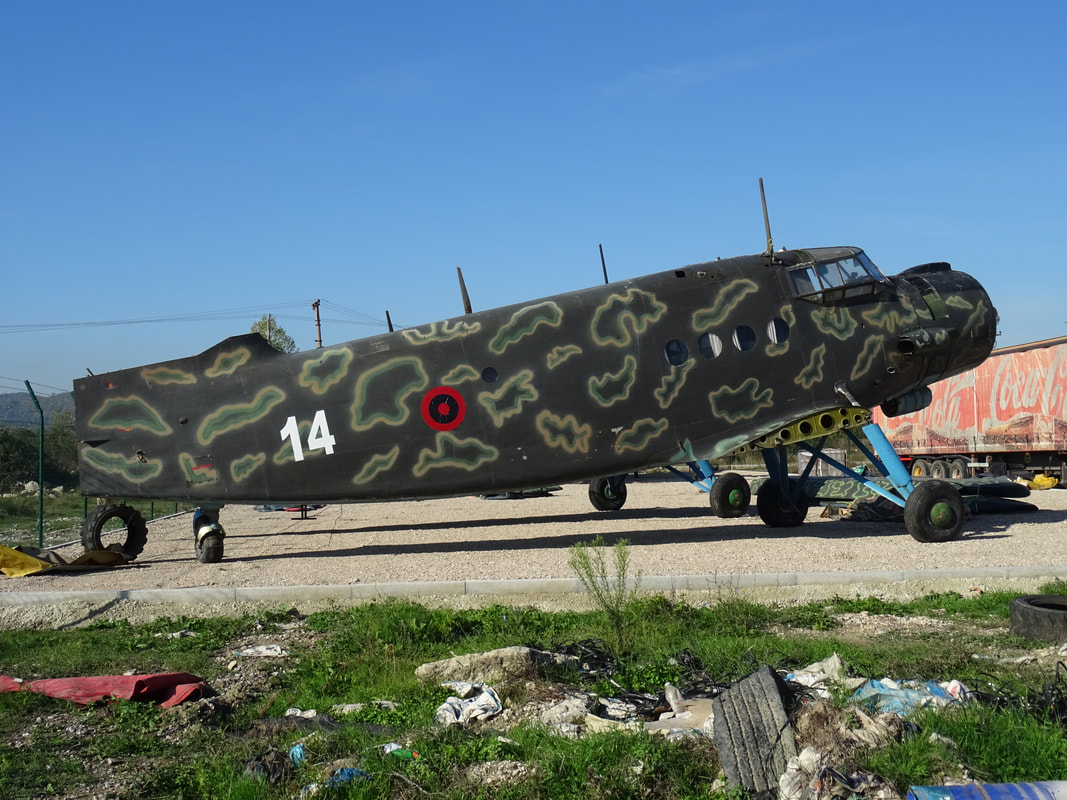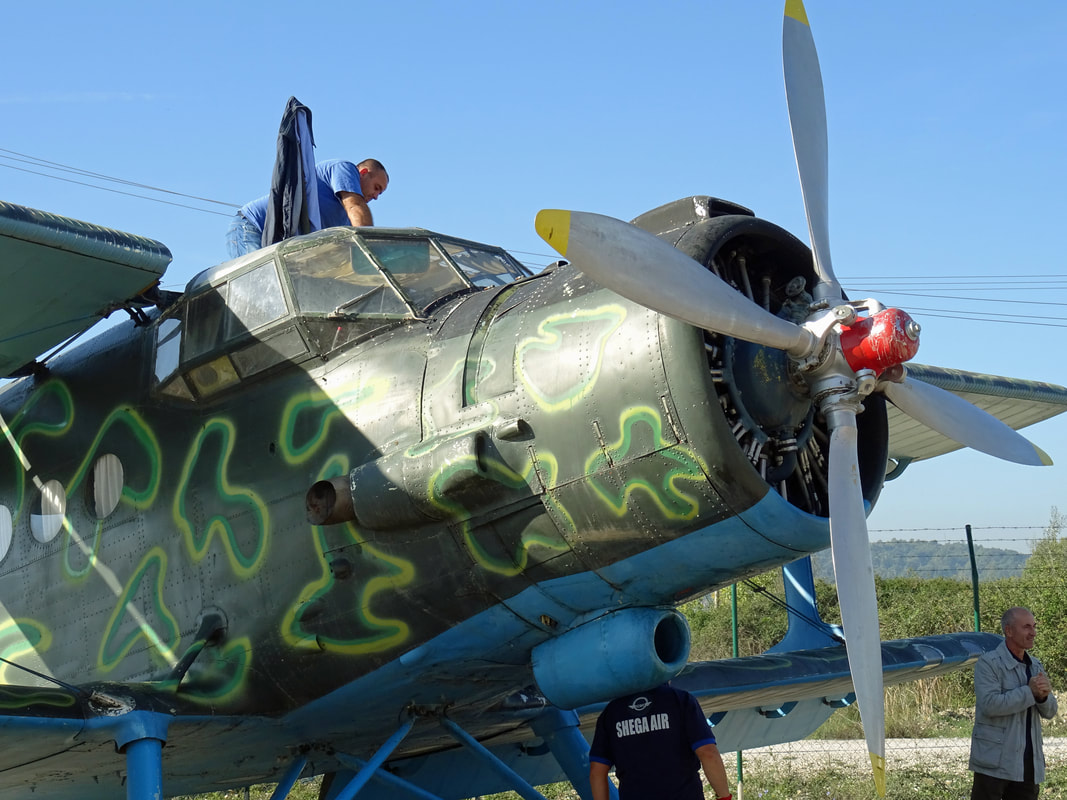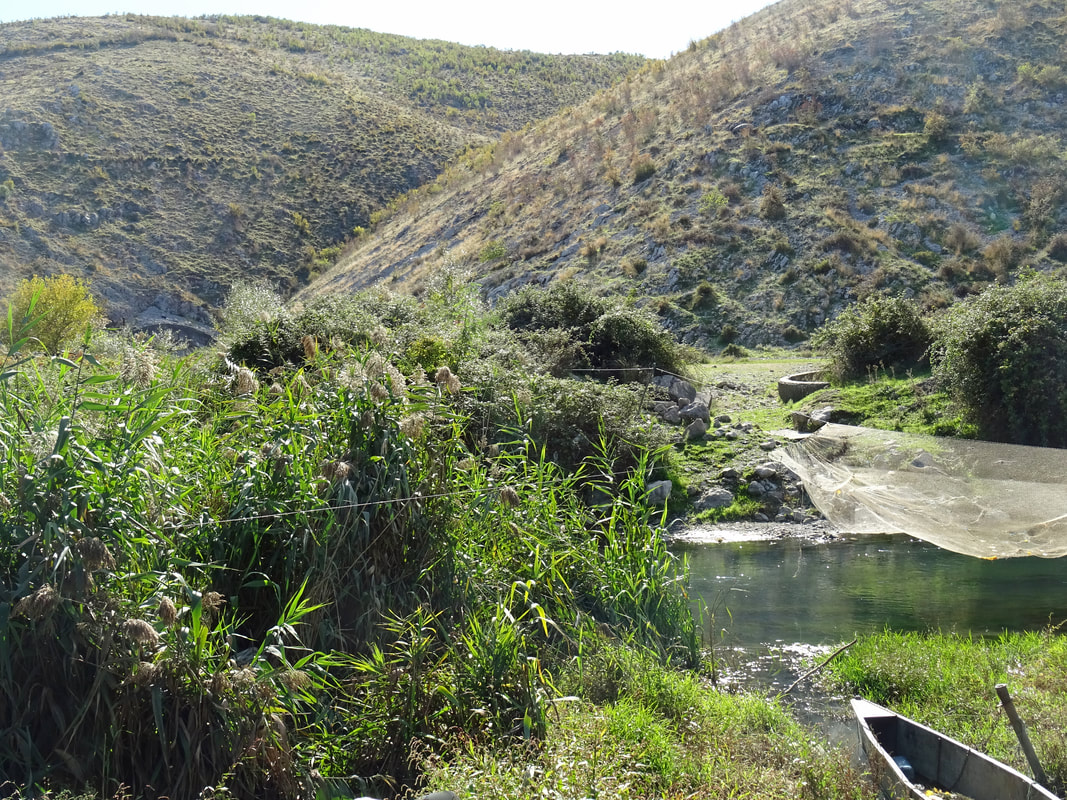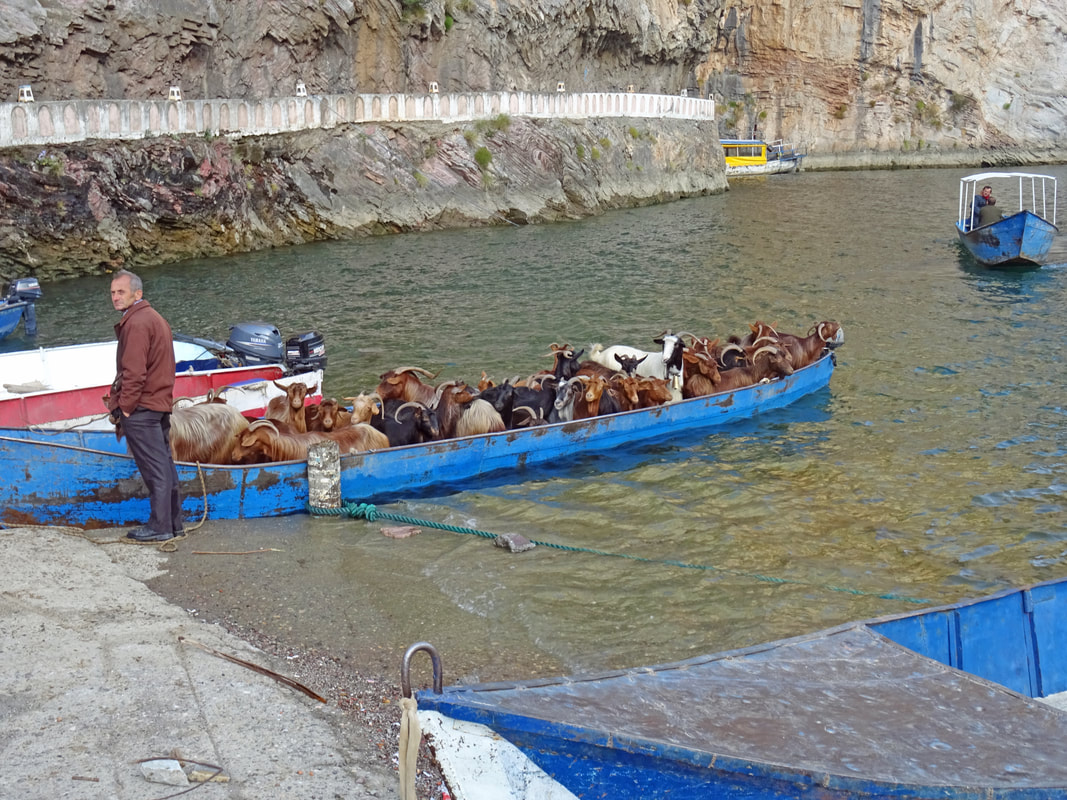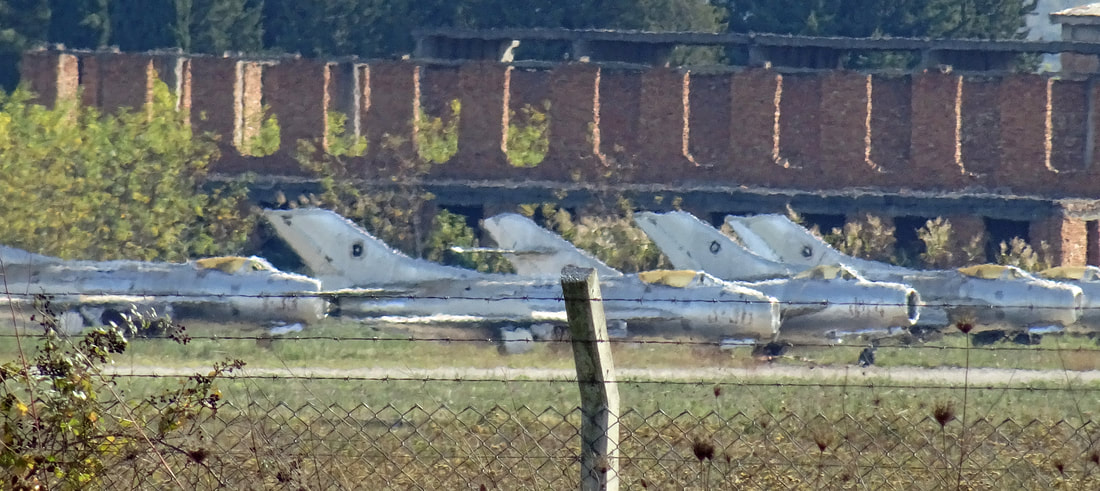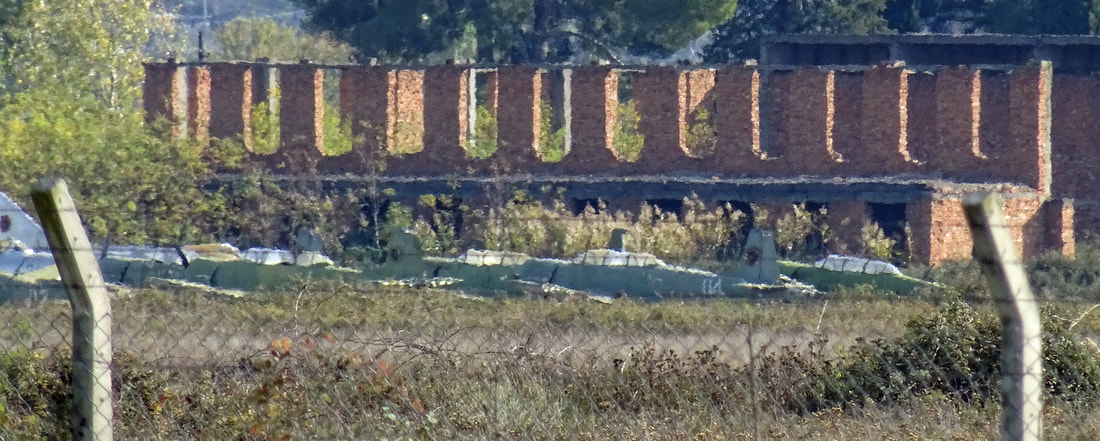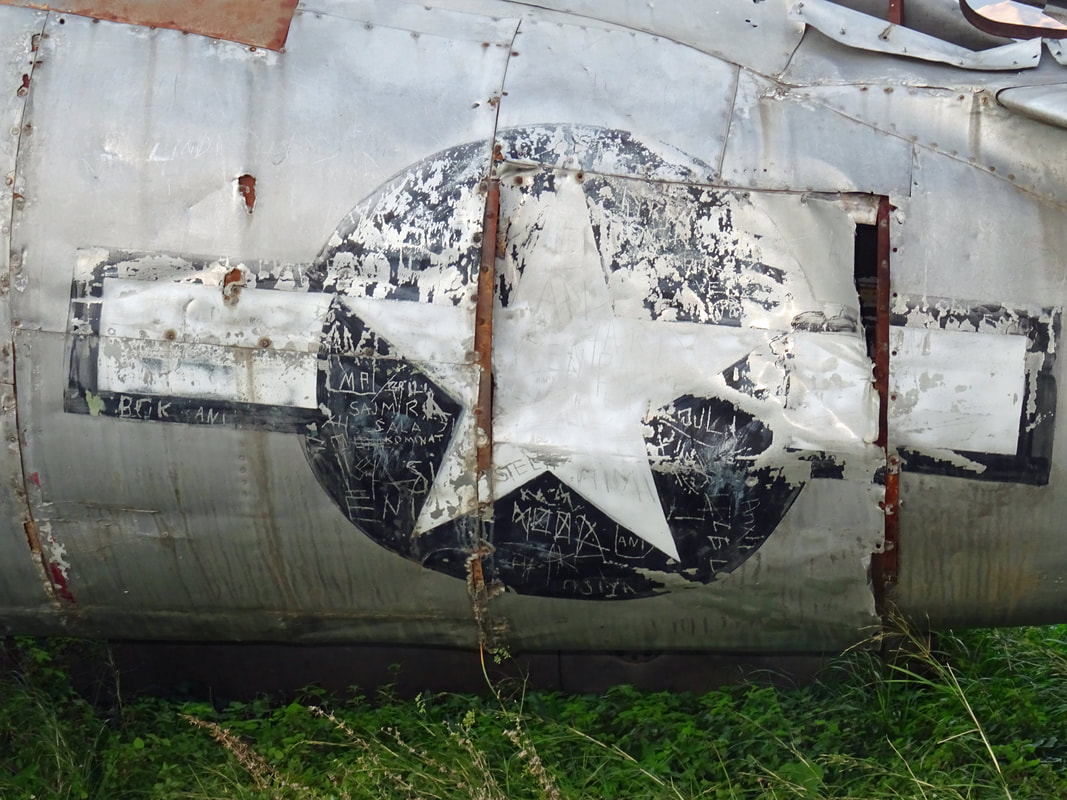Albania 2017
by Jan Koppen
In October 2017, my family and I were on vacation in Albania, and during the road-tour, I visited several aviation sites.
This Nanchang Y-5 (Chinese built Antonov An.2) is ex Albanian Air Force and seen here preserved at Tirana International Airport.
The Shvetsov ASh-62 is a 1000 hp piston-engine.
Skenderbeg Square, Tirana, Albania.
Ernest Airbus A319 EC-FVG on a bright October day in 2017.
The low angled light of the October evening highlights the enlarged bypass duct collar passing around the ‘chest’ of each engine of this Blue Panorama Boeing 737-430 9H-GTC.
Fading into the sunset is this Blue Panorama Boeing 737-430 9H-HUE.
Blue Panorama Boeing 737-8AS EI-CSI taxing out for departures with the Dinaric Alps in the background.
Tirana's storage area.
Star Airways was an airline based in Tirana, Albania. It was founded by several Albanian and Italian investors and obtained its operating license in June 2009. The airline already ceased all operations in September 2010. Star Airways Embraer 110 ZA-ADA previously flew for Ada Airways.
Anonymous BAe 146-300 ZA-MAN caught on camara in the evening light. She flew for Albanian Airlines, Eurowings, Air UK and started her career with British Airways in 1991.
Albanian Airlines was an airline based in Tirana, Albania. It operated scheduled international services. Its main hub was Tirana International Airport Nënë Tereza.
The airline was initially established in May 1991 using TU 134 aircraft and operated under the name of Arberia Airlines. This was the private airline of politicians for communist Albania. The airline was later renamed to Albanian Airlines in May 1992 and started open operations to the public on 20 June 1992.
By 2001 it operated a fleet of four Tupolev Tu-134 aircraft on scheduled services from Tirana to Bologna, Frankfurt, Istanbul, Pristina, Rome and Zürich. In July 2001, Albanian Airlines started upgrading its fleet by gradually removing its Tupolev aircraft and acquired its first BAe 146. Two more BAe 146 were added in 2003 and 2004. This upgrading process allowed the company to expand to new strategic markets such as Belgium and Germany but on November 11, 2011, Albania’s Civil Aviation Authority revoked the license of Albanian Airlines.
The airline was initially established in May 1991 using TU 134 aircraft and operated under the name of Arberia Airlines. This was the private airline of politicians for communist Albania. The airline was later renamed to Albanian Airlines in May 1992 and started open operations to the public on 20 June 1992.
By 2001 it operated a fleet of four Tupolev Tu-134 aircraft on scheduled services from Tirana to Bologna, Frankfurt, Istanbul, Pristina, Rome and Zürich. In July 2001, Albanian Airlines started upgrading its fleet by gradually removing its Tupolev aircraft and acquired its first BAe 146. Two more BAe 146 were added in 2003 and 2004. This upgrading process allowed the company to expand to new strategic markets such as Belgium and Germany but on November 11, 2011, Albania’s Civil Aviation Authority revoked the license of Albanian Airlines.
BAe 146-200 ZA-MAL. Delivered new to Aircal as N144AC in 1986. Merged in American Airlines in 1987. Reregistered as N696AA in 1989. To Malmo Aviation as SE-DRG in 1994 and finally sold to Albanian Airlines as ZA-MAL in 2001. Withdrawn from use at Tirana in 2012.
Note; - One uncommon feature of the BAe 146 was the movable split-sections installed upon the tail cone; these would be hydraulically-opened outwards to act as a variable air brake. A similar approach had also been used on the earlier-built Fokker F-28 Fellowship. The design is unique in that it not only slows the aircraft down rapidly, it can aid in rapid descents from economic cruising altitudes and also allowed the engines to be set at higher RPM which helped eliminate 'lag time'. This means the engines respond faster if needed for sudden speed increases or go-arounds on the approach to landing.
Note; - One uncommon feature of the BAe 146 was the movable split-sections installed upon the tail cone; these would be hydraulically-opened outwards to act as a variable air brake. A similar approach had also been used on the earlier-built Fokker F-28 Fellowship. The design is unique in that it not only slows the aircraft down rapidly, it can aid in rapid descents from economic cruising altitudes and also allowed the engines to be set at higher RPM which helped eliminate 'lag time'. This means the engines respond faster if needed for sudden speed increases or go-arounds on the approach to landing.
Crying out for cosmetic attention is this Albanian Airlines BAe146-300 ZA-MEV. She previously worked for Ansett and East West Airlines in Australia.
The original Albanian Airlines logo reflects the Albanian late afternoon light, as BAe 146-100 ZK-MAK awaits her uncertain future, next to a taxiway of Tirana Airport in October 2017.
Six Shenyang F-6's and two Mig-19S's in a row reflect the evening light at Tirana airport.
Shenyang F-6 '3-72' is seen here in beautiful afternoon sunshine.
Three Shenyang FT-5's are caught in the evening light at Tirana's Air Force compound.
Dumped in the Aeronautical Compound of Tirana Airport is this, hardly recognizable Ilyushin IL-14 wreck.
Albanian 'leader' Enver Hoxha. The man who held an entire country hostage for 40 years – and got away with it.
Between 1944 and 1985, the small Balkan nation of Albania was ruled by a strange, sociopathic and, frankly, completely mad dictator by the name of Enver Hoxha. While Stalinism effectively ended in Europe with the death of its namesake, or at least with the Khruschev reforms that followed, it continued unabated and unquestioned in Albania until 1990.
When Hoxha died in 1985, Albania was officially the third poorest country in the world, with the GNP of a small town and an average income of 15 USD a month. Four decades of collectivisation had led to near starvation in the countryside, where Hoxha’s aggressive isolationism meant people were still using farming technology from the 1920s. When the regime finally collapsed a few years after Hoxha’s death, it left behind a tired, hungry, confused and fearful population.
When Hoxha died in 1985, Albania was officially the third poorest country in the world, with the GNP of a small town and an average income of 15 USD a month. Four decades of collectivisation had led to near starvation in the countryside, where Hoxha’s aggressive isolationism meant people were still using farming technology from the 1920s. When the regime finally collapsed a few years after Hoxha’s death, it left behind a tired, hungry, confused and fearful population.
Shega Air uses their fleet of Harbin-Y5's (Chinese An-2) for para-dropping, spraying and aerial photography.
Wings clipped Nanchang Y-5 '14' is seen here in a Kodak blue sky.
China also builds the Antonov An-2 under license and named them; - Nanchang Y-5.
'21' is an former Albanian Air Force Nanchang Y-5 with a VIP interior and seen here parked, with two sisterships, in a remote corner of Tirana Airport.
Shega Air uses their 'luxury' Nanchang Y-5 to tailor to clientele who are used to living ther lifestyle of 'the rich and famous'.
Cockpit view of a Nanchang Y-5.
Part of the Nanchang Y-5’s ‘stone age’ flight deck.
Again, we got rewarded with bright sunshine on this lovely Sunday morning in October, 2017.
The Nanchang Y-5 was looked after by a working party from Shega Air.
Some former Albanian Nanchang Y-5's 'soldier on' as multi-purpose aircraft on the civil market.
A set of well-used tires occupy this parking lot of Tirana Airport alongside a beautifully turned out Nanchang Y-5 in October 2017.
Distinctive paddle blades absorb the 1000 hp from the Shvetsov ASh-62 engine on this Air Shega Nanchang Y-5 parked at Tirana International, Albania, in October 2017. The ASh-62 was a development of the Wright R-1820 Cyclone that had been built in Russia under licence.
Meticulous maintenance keeps ‘em flying.
"Met het zelfde gemak doe je het in de afvalbak" could be read on the left door of the former Dutch trailer which stands in front of the An-2.
"Welcome aboard Shega Air flight 001 to destination unknown".
A classic cockpit view of the Nanchang Y-5.
The front office of ship 12, but can a photograph communicate the feel of this wonderful machine?
Her switches and controls, worn smooth by the touch of a thousand hands.
Shega Air uses their luxury Cessna Citation 550 and Agusta Westland A109A Mk.II to tailor to clientele who are used to living ‘lifestyles of the rich and famous. Their fleet of Harbin-Y5's (Chinese An-2) and this Antonov An-2R ZA-DEA are used for para-dropping, spraying and aerial photography.
The An-2R is a Polish WSK-Mielec manufactured agricultural variant with tank for 1.300 kg of liquid or powdered chemicals.
The An-2R is a Polish WSK-Mielec manufactured agricultural variant with tank for 1.300 kg of liquid or powdered chemicals.
Evening sunlight glints off Shega Air Antonov An-2 agricultural sprayer, ZA-DEA, at Tirana International airport during our stay in October 2017.
Skenderbeg Square, Tirana, Albania.
Tirana - national museum facade.
GJADËR – ABANDONED UNDERGROUND AIRBASE IN ALBANIA.
Gjadër, Albanië, underground hangars carved out beneath nearby mountains and linked to the main runways by dedicated taxiways offered unprecedented security from potential NATO air raids.
The Gjadër airfield is unique in Albania in being built near a mountain. It was built to allow aircraft after landing to go into a tunnel under the mountain. The tunnels have a capacity of storing about 50 aircraft plus personnel. As the airfield is located in the side of the mountain, the pilots have to be careful not to turn when taking off as they can crash into the sides of the mountain.
On 12 March 1997, the base was stormed by local people during a national revolt against the Albanian government. Several buildings, including the control tower, were destroyed. On 16 March, soldiers abandoned the air base. Lack of funds prevented the base from being repaired, and flying operations ceased in 2000. It is now used as a storage facility for fighter aircraft withdrawn from service.
On 12 March 1997, the base was stormed by local people during a national revolt against the Albanian government. Several buildings, including the control tower, were destroyed. On 16 March, soldiers abandoned the air base. Lack of funds prevented the base from being repaired, and flying operations ceased in 2000. It is now used as a storage facility for fighter aircraft withdrawn from service.
The runway, invented by Soviet planners and built by political prisoners in the 1950s, feature good weather conditions during the whole year. An interesting fact is that dynamite was stored under the airfield so that the runway to be blown up should it fall into enemy hands.
Runway of the closed Gjadër-Zadrima airbase, blocked with concrete blocks to prevent the use of the runway as a race track.
Holding ramp next to the main runway of the now disused Gjadër-Zadrima airbase.
Komani Lake Ferry BERISHA.
Albania is still a poor county.
Kuçovë Air Base, Albanië.
Despite all efforts, I could not get access to Kuçovë Air Base, that's why these pictures are of less quality. This is what you can see from the outside. Be very careful when taking photo's. Guards with dogs are everywhere.
Kuçovë Air Base, built in the Cold War years of the early 1950s, was quite advanced for its time. A trio of underground hangars carved out beneath nearby mountains and linked to the main runways by dedicated taxiways offered unprecedented security from potential NATO air raids. It’s no wonder dozens of Soviet- and Chinese-built jet fighters were based at Kucove… it’s definitely a wonder that in October of 2017, no less than many obsolete MiG fighter jets could still be found at the once state-of-the-art Albanian aerodrome!
Crisp autumn sunshine glints off the polished aluminum hulls of these Albanian Air Force Shenyang F-6's.
In 1997 the base was captured by rebels during the Albanian Crisis (a civil war prompted by the collapse of nation-wide, government-sponsored Ponzi schemes). Both the aircraft and base’s infrastructure incurred damage and vandalism; as many as seven MiG jets were destroyed and their parts sold on the black market. Damage to the base was not completely repaired until the 2002-2004 renovation to NATO standards. The country officially joined NATO on April 1st of 2009… no foolin’.
In 2005 the Albanian Air Force retired all 224 of its various MiG jets, including Shenyang J-5 and J-6 fighters (MiG-17 and MiG-19 jets built under license in China) and even a few propeller-powered trainers purchased in the late 1950s. The planes were mothballed but not immediately replaced, as Albania’s NATO neighbors Greece and Italy began monitoring the country’s airspace.
A Mig-17, a Shenyang J-5 and a Nanchang PT-6 are all retired from service and in storage at Kuçovë.
From the time Albania retired its MiGs and MiG-variants, efforts have been made to auction the decommissioned airplanes, either individually or in batches. These images snapped by me in October of 2017 show Kucove Air Base and its stored aircraft.
Many of the jets, looks to be good condition considering their advanced age and the increasing difficulty of sourcing replacement parts. This may be a function of the corrosion-resistant aluminum alloys used in their construction combined with minimal actual hours in service – Albania withdrew from the Warsaw Pact in 1968 and as such, did not participate in the East Bloc’s frequent exercises.
Several camouflaged Nanchang PT-6's sitting inactive at Kuçovë Air Base.
During my visit, Kucove Air Base was looking a tad rough around the edges as funding from Albania’s impoverished government was severely rationed. Retirement of the country’s air force (and the withering of support services) had a correspondingly deleterious effect on the region’s economy as well. Authorities began to explore a range of solutions that went beyond the sales of obsolete aircraft.
Their bright liveries still gleaming in the strong October sunlight.
In August of 2018, a deal was struck with NATO allowing the organization to modernize Kucove Air Base and subsequently use the base for training, support, logistics, drills, and supply storage. The base is the first footprint of NATO in the Western Balkans.
Morning sunshine glints off the polished aluminum hull of the Albanian Air Force Shenyang J-6, while guardsmen walk their round.
The future doesn’t look quite as rosy for the base’s remaining MiG, Shenyang, Yakovlev and Nanchang aircraft, however. The auctioning-off and scrapping of these getriatic warplanes will certainly start any moment from now. There’s truly never been a better time to acquire a vintage Cold War jet fighter!
Gjirokastër, Albania.
United States Air Force Lockheed RT-33 reconnaissance was plane forced down in December 1957 and is on display in Gjirokastër, Albania.
These are the remains of a United States Air Force two-seat Lockheed T-33 "Shooting Star" jet trainer. This airplane was forced to land at Rinas Airport, near Tirana in December 1957, after developing technical problems and flying off-course. The pilot was returned to the United States a short time later.
The plane was brought to Gjirokastër in 1969 and exhibited in the National Museum of Armaments as a "spy-plane". This proud trophy of the Cold War was made a symbol of the external threat which the communist leadership maintained was attempting to destabilize and overthrow socialism in Albania.
Serial Number: 51-4413
Construction Number: 580-5708
The remains of a United States Air Force T33 Shooting Star are exhibited on the ramparts overlooking the city. The airplane was forced to land at Rinas Airport, near Tirana in December 1957 due to technical problems.
Construction Number: 580-5708
The remains of a United States Air Force T33 Shooting Star are exhibited on the ramparts overlooking the city. The airplane was forced to land at Rinas Airport, near Tirana in December 1957 due to technical problems.
The USAF roundel; - Experiments showed that at a distance, shapes were more important than colors, so bars were added to the roundel with an Insignia Red outline. The Insignia Red outline was replaced with an Insignia Blue outline through the amendment of Army-Navy aeronautical specification on August 14, 1943. Experiments showed that at a distance, shapes were more important than colors, so bars were added to the roundel with an Insignia Red outline.
This strange young fellow seems to be my son.
The concrete bunkers of Albania are a ubiquitous sight in the country, with an average of 5.7 bunkers for every square kilometer. The bunkers were built during the communist government of Enver Hoxha from the 1960s to the 1980s; by 1983 a total of 173,371 concrete bunkers had been constructed around the country.
Hoxha's program of "bunkerization" resulted in the construction of bunkers in every corner of the then People's Socialist Republic of Albania, ranging from mountain passes to city streets. They were never used for their intended purpose during the years that Hoxha governed. The cost of constructing them was a drain on Albania's resources, diverting them away from more pressing needs, such as dealing with the country's housing shortage and poor roads.
The bunkers were abandoned following the collapse of communism in 1990. Most are now derelict, though some have been reused for a variety of purposes including residential accommodation, cafés, storehouses, and shelters for animals or the homeless. A few briefly saw use in the Civil War of the 1990s.
Hoxha's program of "bunkerization" resulted in the construction of bunkers in every corner of the then People's Socialist Republic of Albania, ranging from mountain passes to city streets. They were never used for their intended purpose during the years that Hoxha governed. The cost of constructing them was a drain on Albania's resources, diverting them away from more pressing needs, such as dealing with the country's housing shortage and poor roads.
The bunkers were abandoned following the collapse of communism in 1990. Most are now derelict, though some have been reused for a variety of purposes including residential accommodation, cafés, storehouses, and shelters for animals or the homeless. A few briefly saw use in the Civil War of the 1990s.
Beautiful Lake Orhid.
Across the lake is Macedonia.
- The End -





















